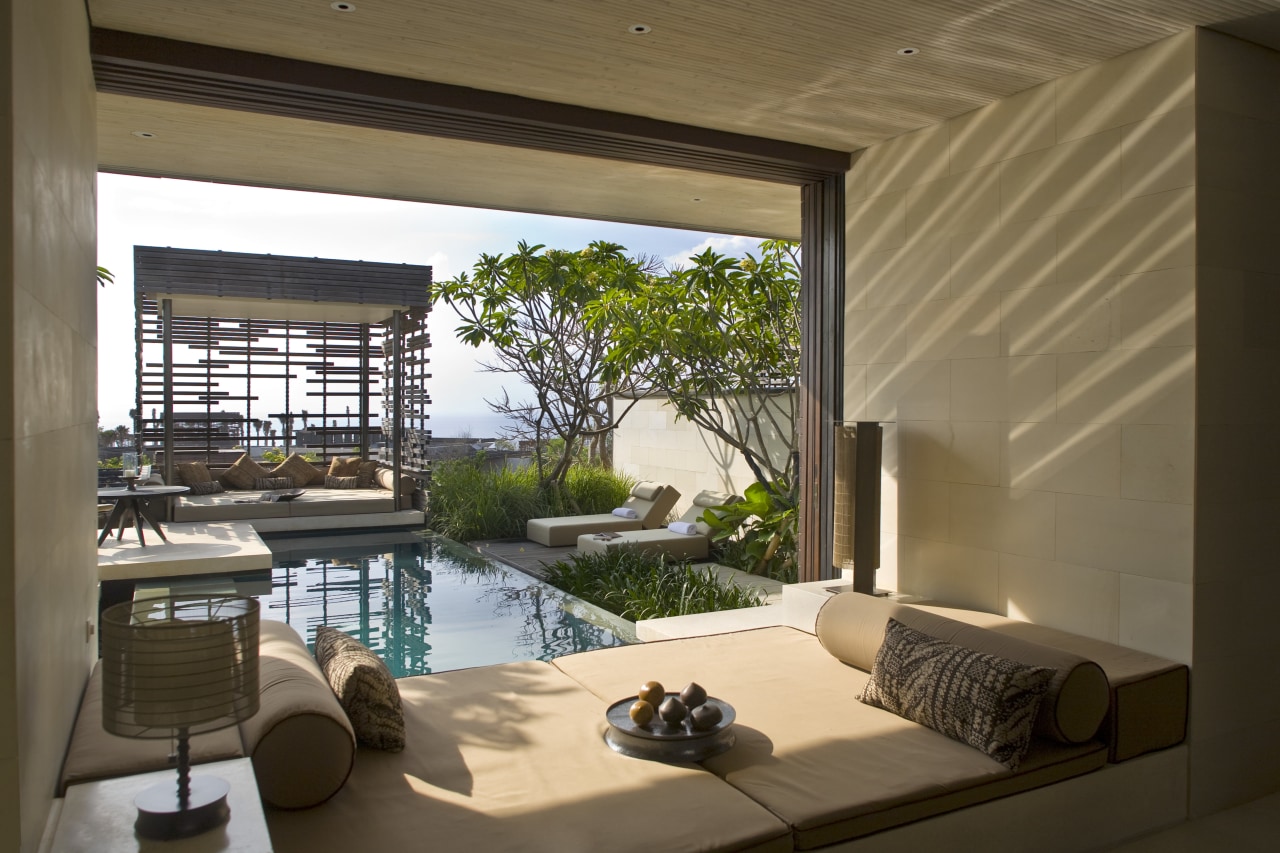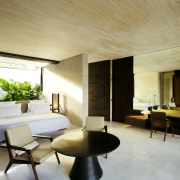OF Earth and Sea
This Balinese resort is doing its part to help protect the fragile environment without sacrificing standards of style and service
Developments are enhancing their appeal to clients and investors alike by demonstrating that opulent design can be environmentally conscious without compromising quality.
The developers of Alila Villas Uluwatu, a seaside resort on the Bukit Peninsula in Bali, decided early on to integrate eco-friendly practices into their project. They chose to work with architectural firm WOHA because of the company's focus on sustainability.
WOHA director Richard Hassell says the objective was to build a resort that would achieve Green Globe certification for building, planning and design. This international certification programme has been developed to help the tourism industry improve its sustainability and reduce environmental impact.
"At Alila Villas Uluwatu, WOHA wanted to create more than the usual stereotypical ideas of Bali we wanted a design that worked with the gently sloping site and dry savannah vegetation," Hassell says.
The result is a cluster of villas, terraces and pools, set high on a plateau that ends in a limestone cliff. All 84 villas and suites are tiered so each one has a panoramic view of the Indian Ocean. However, the emphasis on low-impact, environmentally friendly design doesn't detract from the resort's main aim to provide a place for guests to relax and rejuvenate.

"The design of each villa is inspired by traditional Balinese architecture, in that the house is a collection of pavilion platforms in a compound," Hassell says. "Each villa is not simply a room, but a connected series of spaces to relax."
Walkways and bridges connect the interior and exterior spaces of each villa and access its private pool and pavilion. Shaped like a traditional bale, each pavilion features slats made from bronze and recycled wood, which give a modern appearance as well as privacy. They also allow air to circulate.
Soft earth tones influenced by the landscape were chosen for the interiors, to promote a soothing atmosphere in keeping with the resort's emphasis on relaxation. Furnishings are simple, yet chic. Recycled iron wood features on the walls, and locally grown bamboo covers the ceilings.
As part of the aim to incorporate long-term sustainable practices into the resort, WOHA used local labour to boost the economy and reinforce ecological standards.
"Old timber telegraph poles and wooden railway sleepers were reused in the construction. In fact, all the materials were locally sourced these materials are environmentally sound and support local communities," says Hassell.

Other conservation measures include the installation of low-flow taps with a maximum rate of 9.5 litres per minute, and showers that consume less than 10 litres of water per minute. These aid the resort in reaching its stated goal of 80% water retention.
To reduce the amount of water and chlorine needed, a salt filtration system cleans the water in the pools, and a state-of-the-art sewer treatment plant has been installed. Water for both the guests and staff is heated by the hot exhaust from the air conditioning.
The plants around the grounds at the resort were chosen for their hardiness. Local wild plants such as sweet lemongrass and lantana can flourish with the available rainfall. An efficient soak system, using grey water, is in place for the vegetation that requires watering.
To underline the resort's connection to nature, plants are also encouraged to grow on the roofs. The terraced roof of each villa is covered with a local volcanic rock, batu candi. This porous rock absorbs water and allows vegetation to sprout it also provides thermal insulation.
Credit list
Architect
Mechanical and electrical engineer
Landscaping
Roofing
Doors
Paints
Civil engineer
Quantity surveyor
Exterior cladding
Ceiling
Interior finishes
Glazing
Story by: Lori Nims
Home kitchen bathroom commercial design
From farmhouse to farmstead
Walk this way – garden pathways to lead your thinking
Water, water, not everywhere











